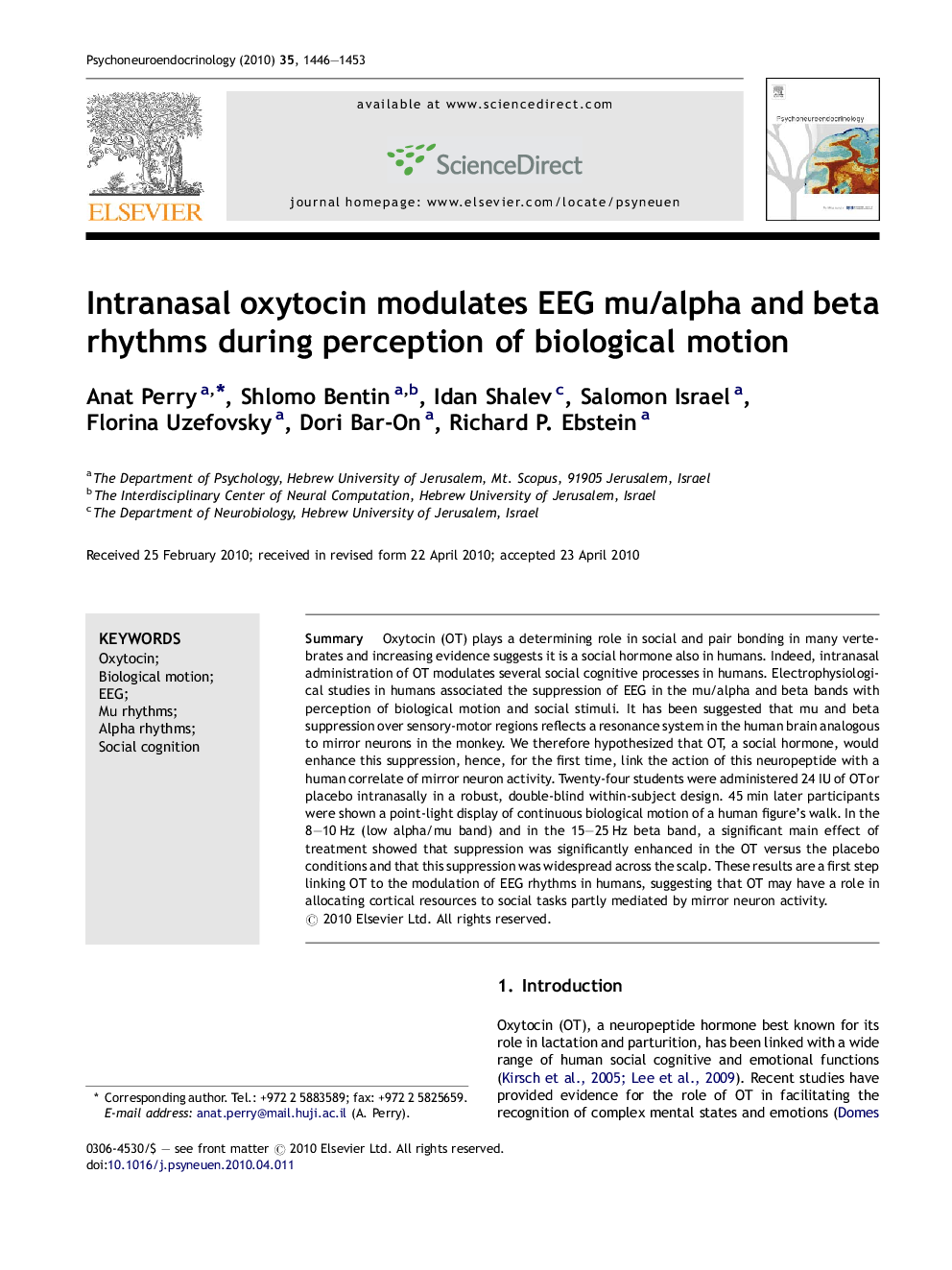| Article ID | Journal | Published Year | Pages | File Type |
|---|---|---|---|---|
| 335999 | Psychoneuroendocrinology | 2010 | 8 Pages |
SummaryOxytocin (OT) plays a determining role in social and pair bonding in many vertebrates and increasing evidence suggests it is a social hormone also in humans. Indeed, intranasal administration of OT modulates several social cognitive processes in humans. Electrophysiological studies in humans associated the suppression of EEG in the mu/alpha and beta bands with perception of biological motion and social stimuli. It has been suggested that mu and beta suppression over sensory-motor regions reflects a resonance system in the human brain analogous to mirror neurons in the monkey. We therefore hypothesized that OT, a social hormone, would enhance this suppression, hence, for the first time, link the action of this neuropeptide with a human correlate of mirror neuron activity. Twenty-four students were administered 24 IU of OT or placebo intranasally in a robust, double-blind within-subject design. 45 min later participants were shown a point-light display of continuous biological motion of a human figure's walk. In the 8–10 Hz (low alpha/mu band) and in the 15–25 Hz beta band, a significant main effect of treatment showed that suppression was significantly enhanced in the OT versus the placebo conditions and that this suppression was widespread across the scalp. These results are a first step linking OT to the modulation of EEG rhythms in humans, suggesting that OT may have a role in allocating cortical resources to social tasks partly mediated by mirror neuron activity.
